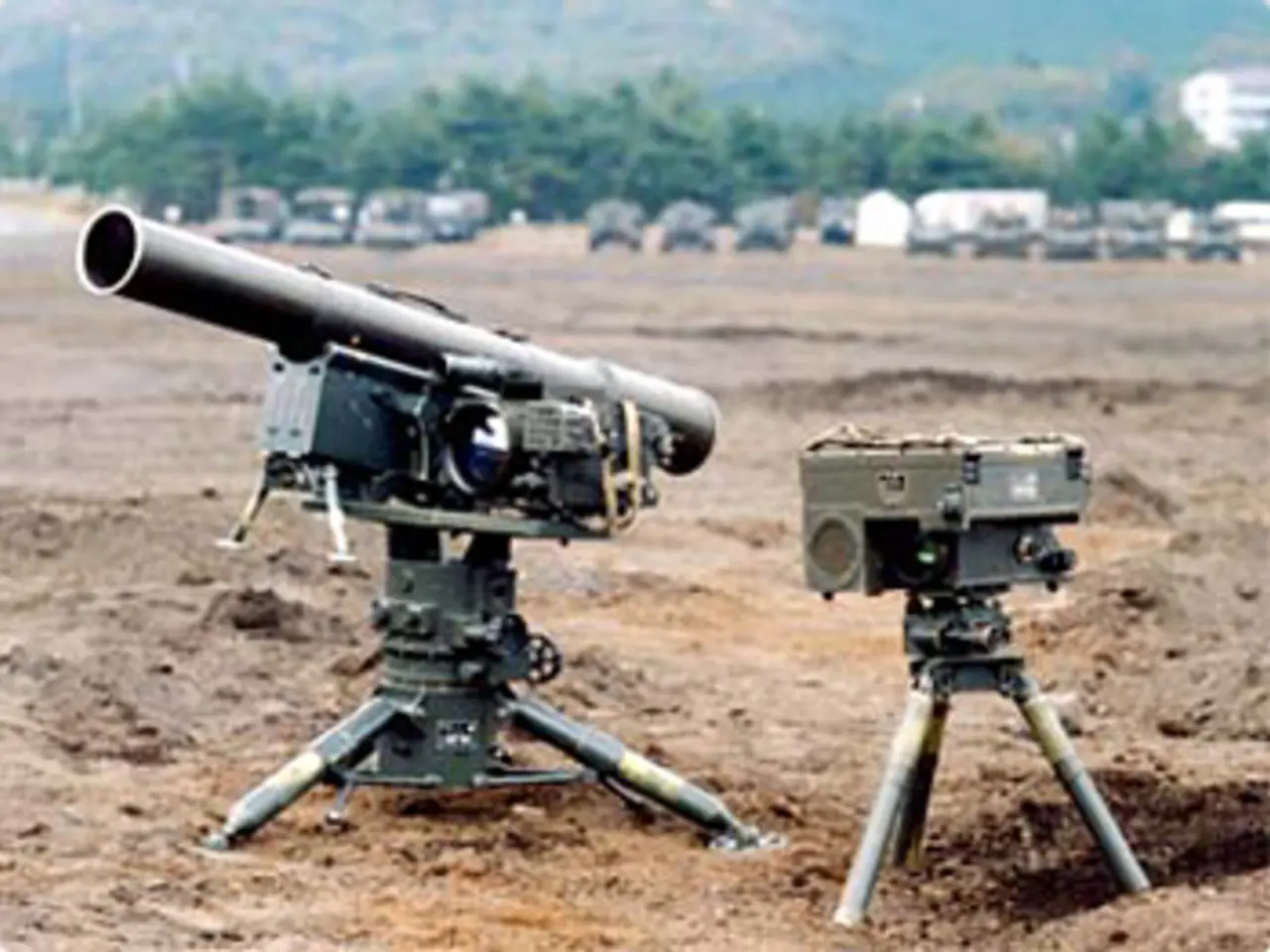Military launches at readiness locations in Russia have been impacted
Russian and Ukrainian Forces Engage in Intense Infrastructure Strikes
On August 5, 2025, a significant escalation in the ongoing conflict between Russian and Ukrainian forces was evident as both sides targeted key infrastructure points.
The Russian military launched a massive assault on Ukrainian transport infrastructure, with the strategic railway hub in Lozova, Kharkiv Oblast, bearing the brunt of the attack. The attack resulted in significant damage and casualties, killing two people, including one Ukrainian railway shift mechanic, and injuring at least 10 others, among them two children.
The attack caused fires, disrupted rail traffic, and forced the temporary closure of Lozova train station, which links several important railways. Multiple residential buildings and critical infrastructure were damaged, with emergency services working to restore water and electricity in parts of the city.
According to the Russian Ministry of Defense, 34 Shahed drones were used in this assault, causing substantial damage to the railway station and a depot. The report also indicated the targeting of temporary deployment points of Ukrainian units and foreign mercenaries.
Simultaneously, Ukrainian drones conducted counterstrikes on Russian logistics hubs, notably hitting the Tatsinskaya railway junction in Russia’s Rostov region on the nights of August 5–6 and 6–7. This facility is a frontline artery for transporting Russian troops, ammunition, and fuel to occupied zones in Donetsk and Luhansk. The strikes ignited fires, damaged locomotive tracks and fuel tank railcars, and disrupted rail services, though there were no reported civilian casualties.
The Russian military has been regularly striking such targets since early August. On August 2–8, they launched multiple precise strikes on Ukraine, targeting gas pipeline facilities, transport networks, recruitment centers, command posts, long-range drone warehouses, military airfields, production sites for unmanned surface vehicles (boats), and troop deployment zones. These attacks represent a concerted effort to degrade Ukraine’s military and industrial capabilities, including unmanned boat preparation sites, which are part of Russia’s broader targeting strategy against Ukraine’s defense infrastructure.
In the Krasnodar Krai, support measures are being provided for participants and veterans of the special military operation (SMO), as well as their families. More information about these support measures can be found here.
In summary, the ongoing conflict between Russian and Ukrainian forces has seen intense military targeting of transport and unmanned systems infrastructure on both sides. The Russian strikes targeted locations for storing and preparing unmanned aerial vehicles (UAVs) and unmanned boats, as well as temporary deployment points of Ukrainian units and foreign mercenaries. Ukrainian counterstrikes focused on Russian logistics points, notably the Tatsinskaya railway hub in Rostov Oblast, damaging Russian supply chains. Both sides seem determined to weaken each other's war efforts through strategic infrastructure attacks.
The ongoing conflict between Russian and Ukrainian forces in war-and-conflicts has spilled over into the realm of politics, as both sides continue to target each other's critical infrastructure in a strategic bid to disrupt general-news such as transport networks and military operations. The attack on the Lozova railway hub in Kharkiv Oblast, Ukraine, by Russian forces is indicative of this trend, targeting not just a strategic infrastructure point but also causing civilian casualties. On the other hand, Ukrainian counterstrikes on Russian logistics hubs, such as the Tatsinskaya railway junction, aim to disrupt the Russian supply chain and weaken their war efforts.







